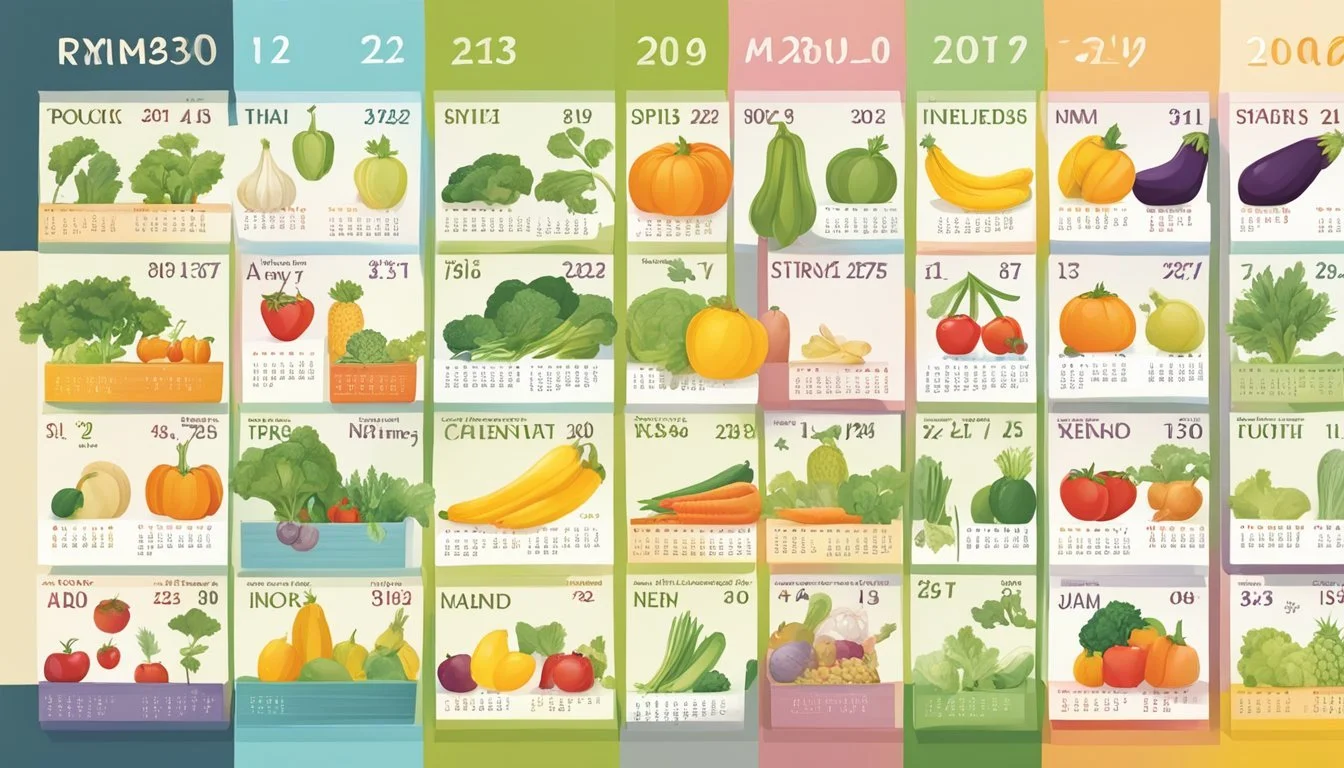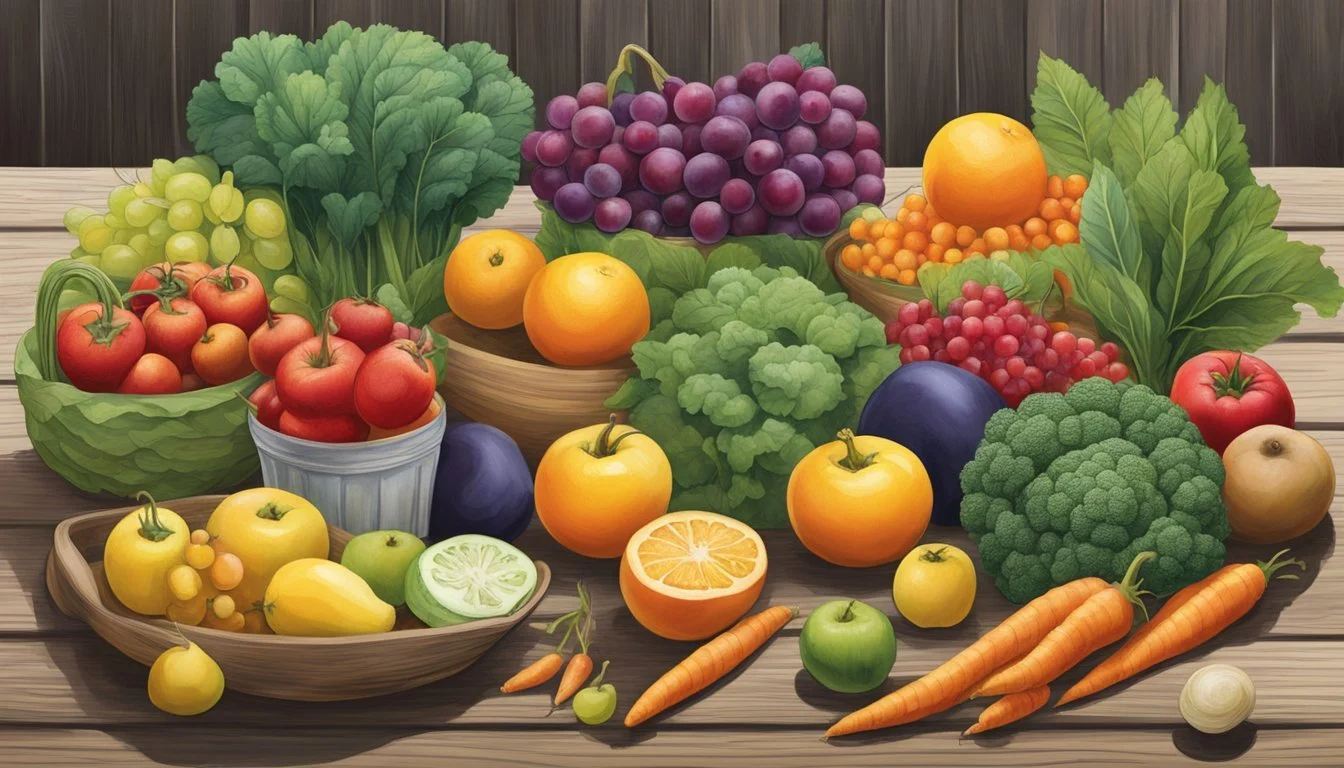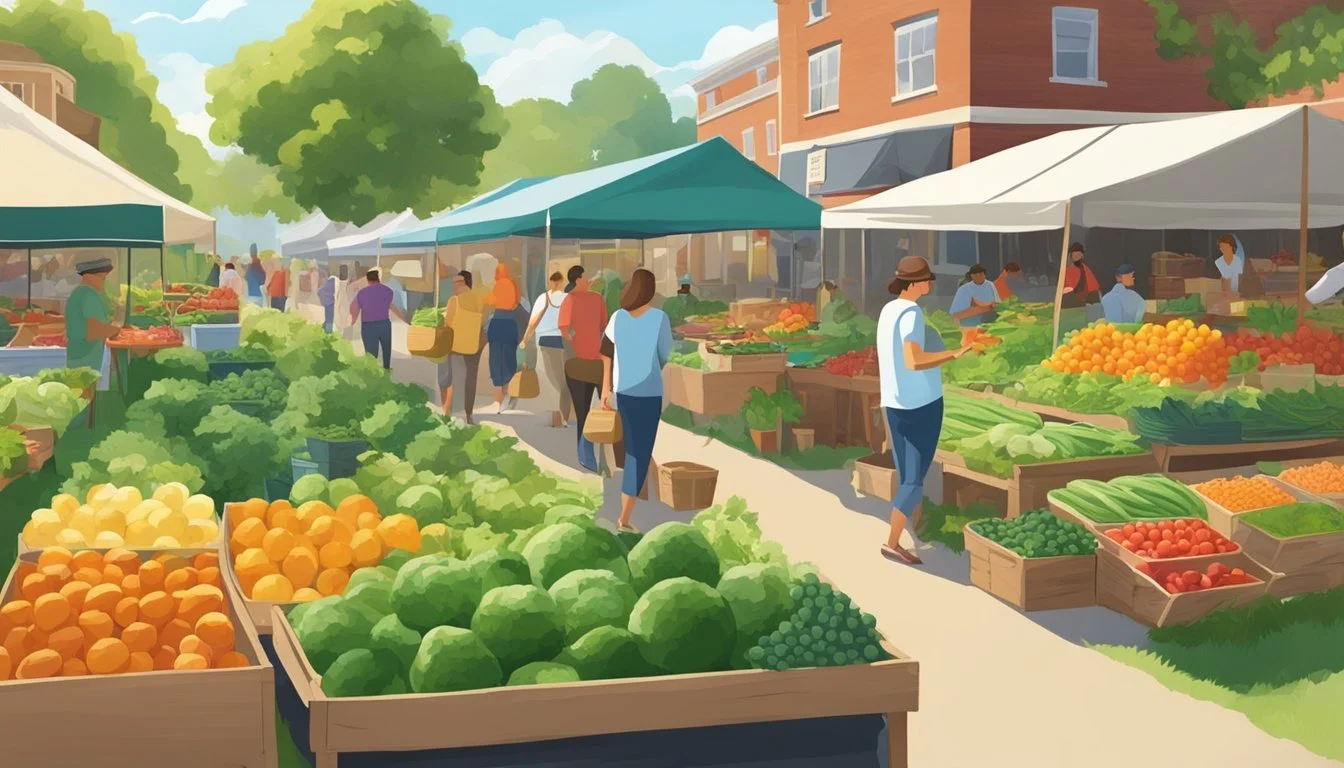Rhode Island Seasonal Fruit & Veg Guide
Your Year-Round Local Produce Calendar
Embracing the farm-to-table movement enhances the culinary experience by ensuring that only the freshest, most flavorful produce reaches the kitchen. It also supports local farmers and minimizes one's carbon footprint. Rhode Island, with its rich agricultural heritage and commitment to locally sourced food, exemplifies this philosophy through its various farmers' markets and farm stands that dot the state.
Residents and chefs alike have the opportunity to enjoy a bounty of fruits and vegetables that shift with the seasons, a testament to the state's diverse climate and fertile land. The state offers a variety of produce, from crisp apples (how long do apples last?)in the fall to succulent strawberries in the summer, making it easy to eat seasonally.
Seasonal guides are indispensable tools for those looking to navigate the rich landscape of Rhode Island's farm-to-table offerings. They provide essential information on what's available throughout the year, making it simpler for consumers to plan meals around locally-grown ingredients and to connect with the natural cycles of regional agriculture.
What’s in Season in Rhode Right Now?
Understanding Rhode Island's Growing Seasons
Rhode Island's climate fosters a diverse array of produce throughout the year. Local farmers strategically plan their planting schedules to optimize the harvest of a variety of fruits and vegetables.
Spring Harvest
In spring, Rhode Island farmers begin to harvest vegetables like asparagus (how long does asparagus last?) and rhubarb, which are some of the first crops to become available. These crops are usually in season by late April.
Asparagus: typically harvested from April to June.
Rhubarb: available from April, often extending into early summer.
Summer Bounty
The summer months in Rhode Island are abundant, as local farms burst with a variety of crops. By July and August, farmers' markets are vibrant with strawberries, tomatoes, corn, and a wide selection of herbs.
Strawberries: peak harvest in June and July.
Tomatoes & Corn: become ripe around midsummer, continuing through August.
Herbs: such as basil, cilantro, and mint are plentiful throughout the summer.
Fall Flavors
As the season transitions into fall, crops like pumpkins and apples become the stars of the harvest. These are typically in peak season by November, when the cooler weather supports their growth.
Pumpkins: harvested in late September through October.
Apples: reach their peak from September to late fall.
Winter Offerings
During the winter months of February and March, the options may become more limited, yet farms still offer cold-hardy produce. Local farmers may provide hearty vegetables that withstand the colder temperatures.
Notable winter crops may include root vegetables and hearty greens that can survive the cold Rhode Island winters. Storage crops like potatoes, apples, and winter squash, harvested in the fall, are typically available throughout the winter.
Local Produce Availability Calendar
Rhode Island's climate and soils produce a vibrant range of fruits and vegetables, transitioning through the seasons. This guide provides month-by-month recommendations for selecting the freshest farm-to-table options in the state.
Monthly Guide to Fruits
May marks the beginning of berry season, with strawberries often leading the way. Residents eagerly anticipate the sweet, juicy fruits as they become abundant at local markets.
June continues the berry bonanza, adding raspberries and cherries to the list. These fruits typically reach their peak during this month, inviting a plethora of fresh-picked options for consumers.
In September, orchards begin to fill with a variety of fruits, but it is the pears that are especially noteworthy. Their harvest season often peaks by the end of this month, offering a ripe, succulent flavor.
Monthly Guide to Vegetables
Come April, the ground yields early vegetables such as spinach and lettuce. These greens flourish in the cool spring temperatures, providing crisp, tender leaves ideal for salads.
As the season progresses into June, a spectrum of vegetables becomes available. This is when eggplant and onions start to make their appearance, and availability increases as summer progresses.
Once September arrives, the focus shifts to heartier produce. It is the prime time for pumpkins, which become the stars of local harvests, alongside a colorful variety of squashes and root vegetables.
Exploring Local Farmers' Markets
Rhode Island's vibrant farmers' markets provide an array of local food options including fresh produce, flowers, and artisanal goods. They are a cornerstone of the state's farm-to-table movement.
Providence Farmers Market
The Providence Farmers Market stands out as a key destination for those seeking fresh, locally-sourced fruits and vegetables. Patrons can enjoy a selection of goods encompassing not only produce but also fresh flowers, enhancing the sensory experience with both taste and aesthetics. This market operates year-round with changing schedules:
Spring through Fall: Open with a broad selection of vendors.
Winter Schedule (December 2023 - March 2024): Biweekly Fridays, 12-3pm, ensuring access to fresh produce even in the colder months.
Payments accepted here include cash, credit/debit, EBT, and WIC, making it accessible to a wide range of shoppers.
Community-Supported Agriculture (CSA)
Community-Supported Agriculture (CSA) programs are integral to Rhode Island's local food ecosystem. CSAs allow residents to purchase a "share" from local farms, providing them with a regular supply of fresh produce throughout the farming season. CSA members typically receive a box of seasonal produce each week, promoting a direct connection between consumers and small-scale farms. This model benefits both the consumers, who enjoy the freshest possible ingredients, and the farmers, who gain financial support and stability.
Rhode Island's Specialty Foods
Rhode Island is renowned for its vibrant seafood offerings and distinguished dairy products, which play a pivotal role in the state's farm-to-table approach.
Seafood Selections
Rhode Island's coastal waters flourish with a variety of seafood, making it an integral part of the local cuisine. Notably, Matunuck Oyster Bar is celebrated for its farm-to-table seafood, particularly its oysters (What wine goes well with oysters?). Patrons can savor the freshness of oysters that travel directly from local waters to their plates.
Clams (What wine goes well with clams?) and Quahogs: These shellfish (What wine goes well with shellfish?) are staple elements in Rhode Island's seafood scene. Quahogs, or hard-shell clams, are often used in the iconic dish, stuffies.
Lobster (What wine goes well with lobster?): Synonymous with New England cuisine, Rhode Island lobsters are sought after for their rich flavor and tender meat.
Rhode Island's seafood not only serves as a delicacy but also supports local aquaculture and fishing industries, ensuring sustainability and economic vitality.
Dairy and Cheese Producers
Dairy farms dotted across Rhode Island contribute to the state's reputation for high-quality dairy and cheese products. Local artisans and farmers have established a reputation for producing a diverse range of cheese types, showcasing both traditional and innovative approaches.
Stoneacre Brasserie: This establishment, known for its commitment to local sourcing, often features local cheeses in its dishes, elevating the dining experience with fresh, flavorful ingredients.
Dairy: Beyond cheese, Rhode Island farmers supply fresh milk and other dairy products, key components of the state's farm-to-table ethos.
Rhode Island's dairy producers not only emphasize quality but also prioritize sustainable practices, ensuring their products contribute positively to both the environment and the local community.
Supporting Local: The Impact on Economy and Environment
When consumers choose to purchase locally-grown fruits and vegetables in Rhode Island, they directly bolster the local economy. Small businesses and farms receive essential support, which can lead to the creation of jobs within communities. This economic stimulation extends beyond the agricultural sector, as local spending circulates and benefits other local businesses.
Local farming can also have profound effects on the environment. By prioritizing shorter supply chains, emissions associated with transportation are greatly reduced. Local farming practices often favor sustainable methods, which can lead to more biodiverse ecosystems, improving soil health and reducing reliance on harmful chemicals.
Health Benefits:
Local produce: Often fresher and more nutritious
Reduced processing: Less likely to contain preservatives
Environmental Advantages:
Minimized transportation: Decreases fossil fuel consumption
Sustainable agriculture: Can increase biodiversity and soil health
Economic Contributions:
Local spending: Circulates in the community, supporting local jobs
Small businesses: Gain stability from consistent local demand
By incorporating local produce into the food supply of Rhode Island, the state also takes strides in securing its food future. It strengthens the community's resilience to supply chain disruptions and enhances access to nutritious options, improving the overall health of its population.
Agricultural Tourism in Rhode Island
Rhode Island's agricultural tourism offers a hands-on experience with its diverse produce and family-friendly activities. Visitors can engage directly with the state's farming heritage through seasonal fruit and vegetable picking and navigate corn mazes, fostering an appreciation for the local food system.
Fruit and Veg Picking
Seasonal Calendar for Picking:
May: The apple picking season begins, marking the start of a fruitful period for visitors.
Summer: Prime time for picking garden-fresh blueberries.
Rhode Island farms provide a plethora of picking opportunities where one can handpick a variety of fruits and vegetables. This activity not only supports local agriculture but also lets visitors enjoy the fresh flavors right from the source.
Corn Mazes and Farm Fun
Activities:
October: Corn mazes open to the public, offering a challenging and enjoyable experience for all ages.
Year-Round: Farms often host various farm fun activities, such as hayrides and petting zoos, enhancing the agricultural experience.
The area is well-known for its intricate corn mazes, a staple attraction during the fall season. These mazes are not only an entertaining challenge but also a celebration of the state's agricultural creativity and spirit.








